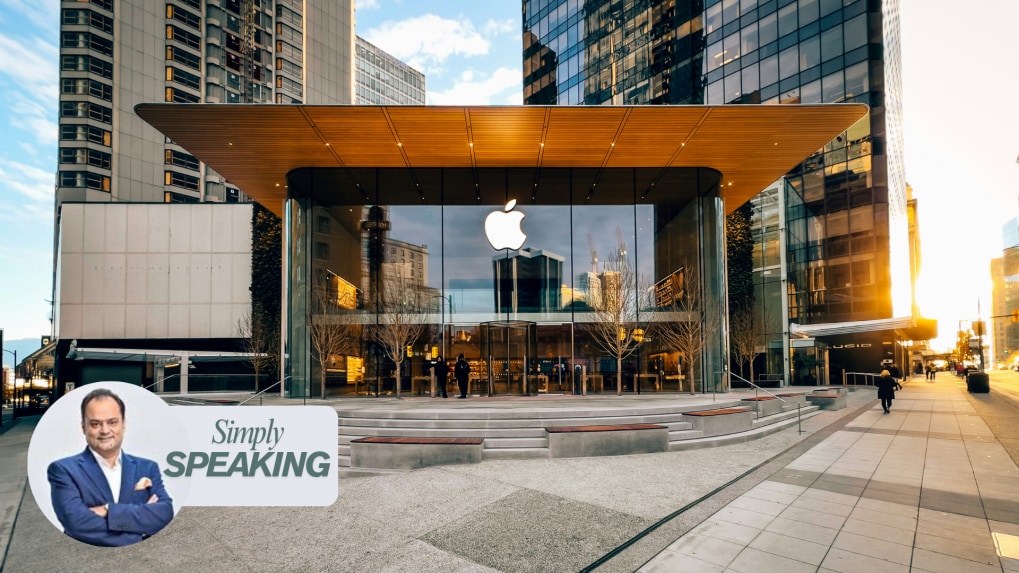Digital
Why OpenAI is hiring 100 ex-bankers: Inside the ChatGPT-maker's secret project to automate Wall Street's grunt work

Few achievements in marketing rival the moment when a brand name slips into everyday language.
When people describe something as “so Apple,” “totally Tesla,” or “Uber-like,” the brand has escaped the boundaries of commerce and entered culture.
It has become an adjective and a living descriptor of quality, style, or behaviour.
This linguistic elevation is not simply a sign of fame. It’s a signal of myth-making power. Language is the ultimate proof of cultural adoption and when the world starts using your name to describe an idea, you’ve gone from being a company to becoming a concept.
Why this is 'Special'
Brands that become adjectives are rare because they embody more than products. They symbolise philosophies.
Google stands for intuitive intelligence and knowledge at your fingertips. Tested and under stress now with AI. But Google acquired both verb and adjective status.
Tesla suggests futuristic innovation. Nike radiates athletic confidence and emotional momentum. Apple means minimalist perfection, aesthetic clarity, and humanized technology.
When people say, “This feels very Nike,” they aren’t referring to a logo. They’re referencing a way of being. These brands define the aspirational grammar of modern life.
To enter language is to achieve semiotic immortality. Long after advertising fades, adjectives persist. We still describe things as “Kafkaesque,” “Orwellian,” or “Freudian.” When a brand joins that list, it becomes a social metaphor and shorthand for a set of meanings that no longer need explanation.
What it takes
The journey from product to adjective is neither accidental nor guaranteed. It demands consistency, cultural resonance, and symbolic clarity over time.
A distinctive core idea
Every adjective-brand begins with a sharply defined essence. Apple’s “Think Different” philosophy distilled simplicity, design, and rebellion into one aesthetic. Nike’s “Just Do It” gave physical action moral power. Tesla turned electric mobility into a statement of futurism and audacity.
A visual and emotional code
These brands don’t just advertise they author a sensory world. The sleek minimalism of Apple Stores, the kinetic energy of Nike ads, the cinematic futurism of Tesla dashboards, each offers a complete aesthetic experience that extends beyond the product.
Repetition with meaning
Generic advertising repeats messages; great brands repeat meaning. Every touchpoint reinforces the same symbolic DNA until consumers internalize it. Google’s uncluttered homepage, Amazon’s relentless efficiency, Disney’s wholesome magic have all become archetypes.
Cultural relevance over time
To remain adjectival, a brand must evolve without eroding its symbolic core. “Disney” still means magical innocence in a world of streaming cynicism. “Rolex” continues to signal timeless prestige even in an age of smartwatches. Cultural adjectives survive because they adapt meaningfully to new eras.
Emotional truth
A brand cannot become a linguistic shorthand unless it articulates something emotionally universal. “Lego-like” captures our innate desire to build and play. “IKEA-style” expresses our yearning for beauty in affordability. These aren’t marketing constructs — they’re emotional codes.
How to nurture it
To nurture a brand into an adjective is to play the long game of cultural authorship. It requires stewardship, not just storytelling.
Guard the Meaning
As brands enter language, they risk dilution. “Kleenex” became a generic tissue, and “Xerox” a generic copier — a fate so common it has a legal name: genericization. Google famously reminds users not to “Google” as a verb, because ubiquity can erode ownership. The paradox of success is that cultural immortality can threaten commercial control.
Expand the Myth, Not the SKUs
Adjective-brands expand meaning before expanding product lines. When Nike moved from shoes to apps, or Apple from computers to phones, they didn’t change who they were but extended their myth into new contexts. The principle was to never grow faster than their meaning.
Stay Symbolic
Brands that endure as adjectives operate at a mythic level. They stand for human values like freedom, creativity, speed, excellence and not only for technical features. Disney equals innocence. Rolex equals time mastery. Tesla equals progress. Their genius lies in embodying virtues that outlast their categories.
Invite Participation
Culture is co-created. The reason “Gucci” became slang for “cool” is because the audience adopted it as expression. When users remix brand meaning, that’s a sign of vitality, not loss of control. The goal is to be interpretable, not inert.
The cultural summit of branding
When brands enter language, they stop competing in the marketplace and start competing in the imagination. They transcend marketing and become metaphors which is the highest form of relevance.
An adjective brand doesn’t sell; it defines. It’s no longer a story you tell but a reference others use. It moves from the ad break to the adjective clause and thus from marketplace to mythology.
That is the summit every brand aspires to: when your name stops needing your logo, and your meaning starts living in everyday speech.
Shubhranshu Singh is a business leader , cultural strategist and columnist. He was named as one of the 50 most influential global CMOs for 2025 by Forbes. He serves as the APAC representative on the EffieLIONS foundation board.
Read More: Simply Speaking: Brands are born inside
From purpose-driven work and narrative-rich brand films to AI-enabled ideas and creator-led collaborations, the awards reflect the full spectrum of modern creativity.
Read MoreIn a wide-ranging interview with Storyboard18, Sorrell delivers his frankest assessment yet of how the deal will redefine creativity, media, and talent across markets.